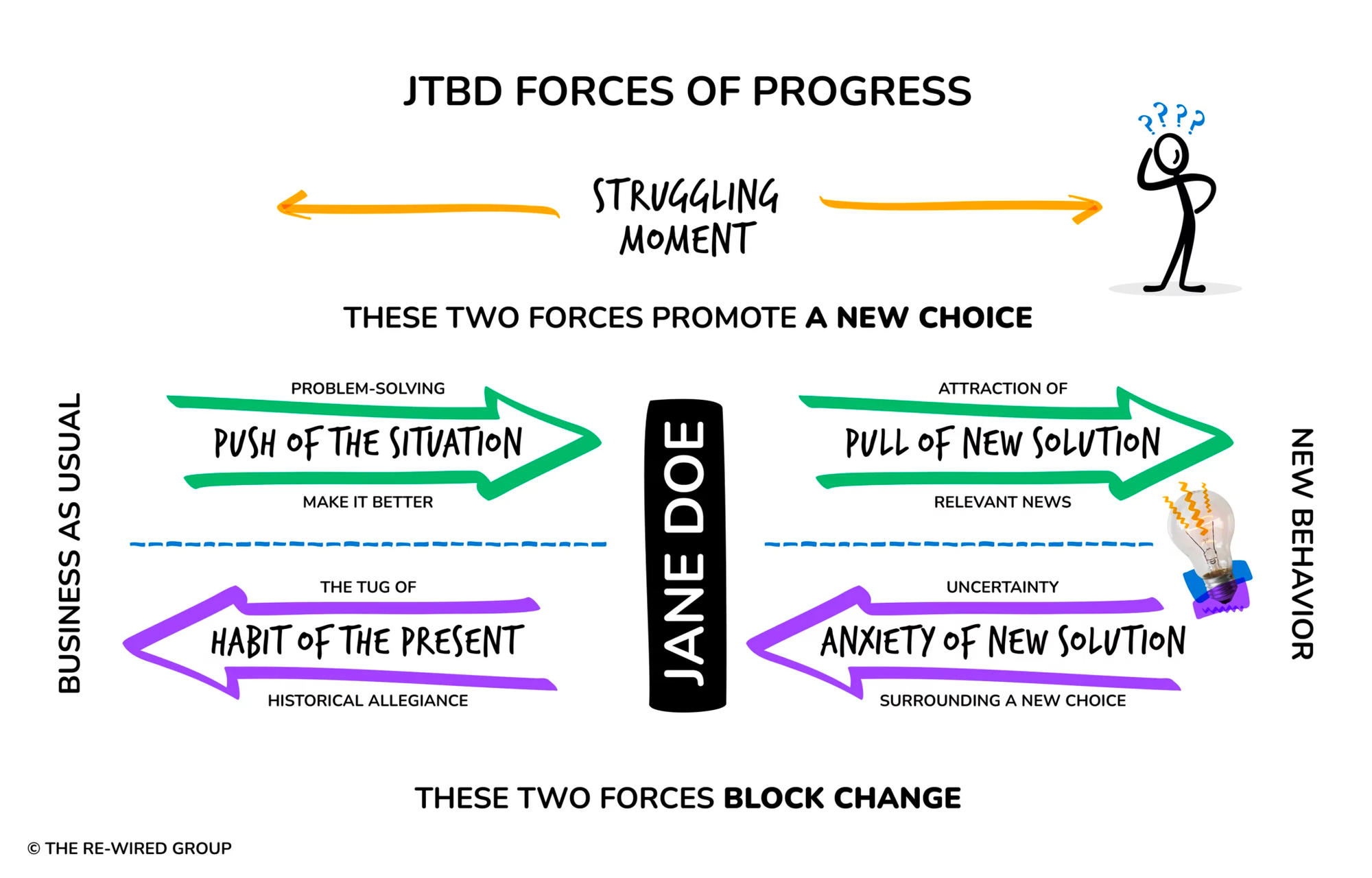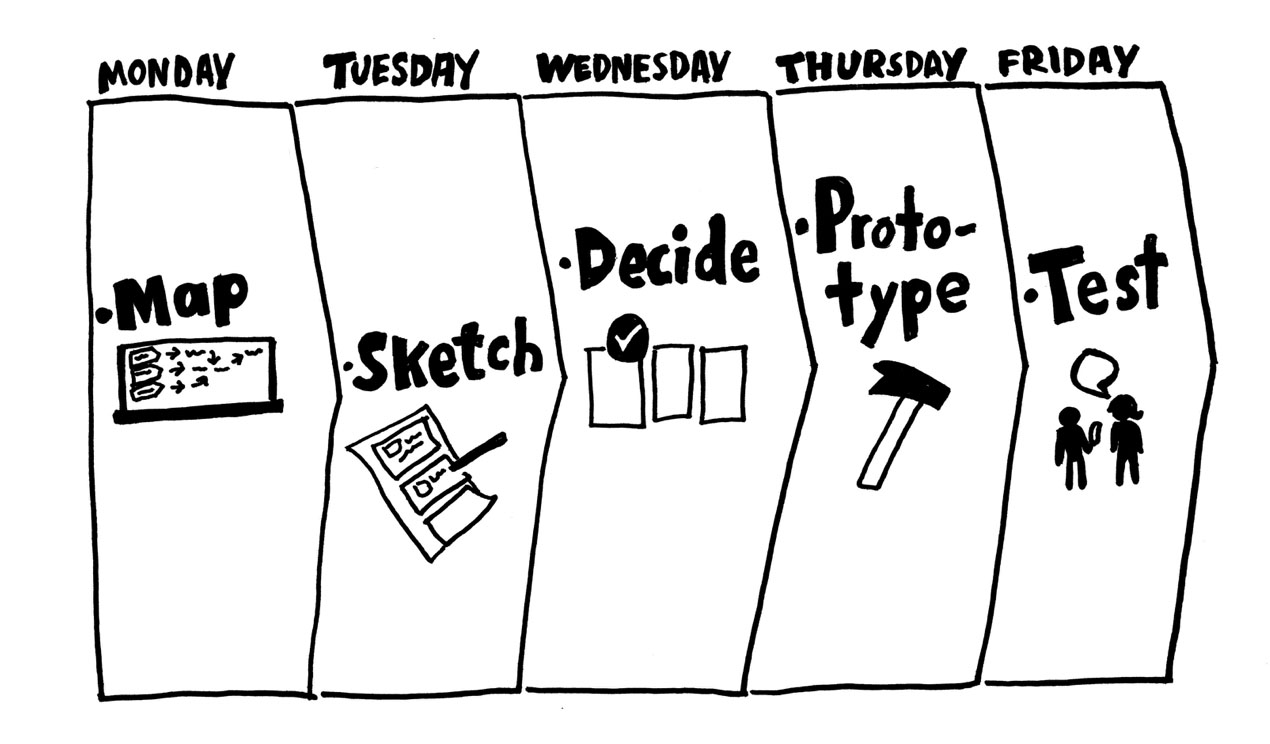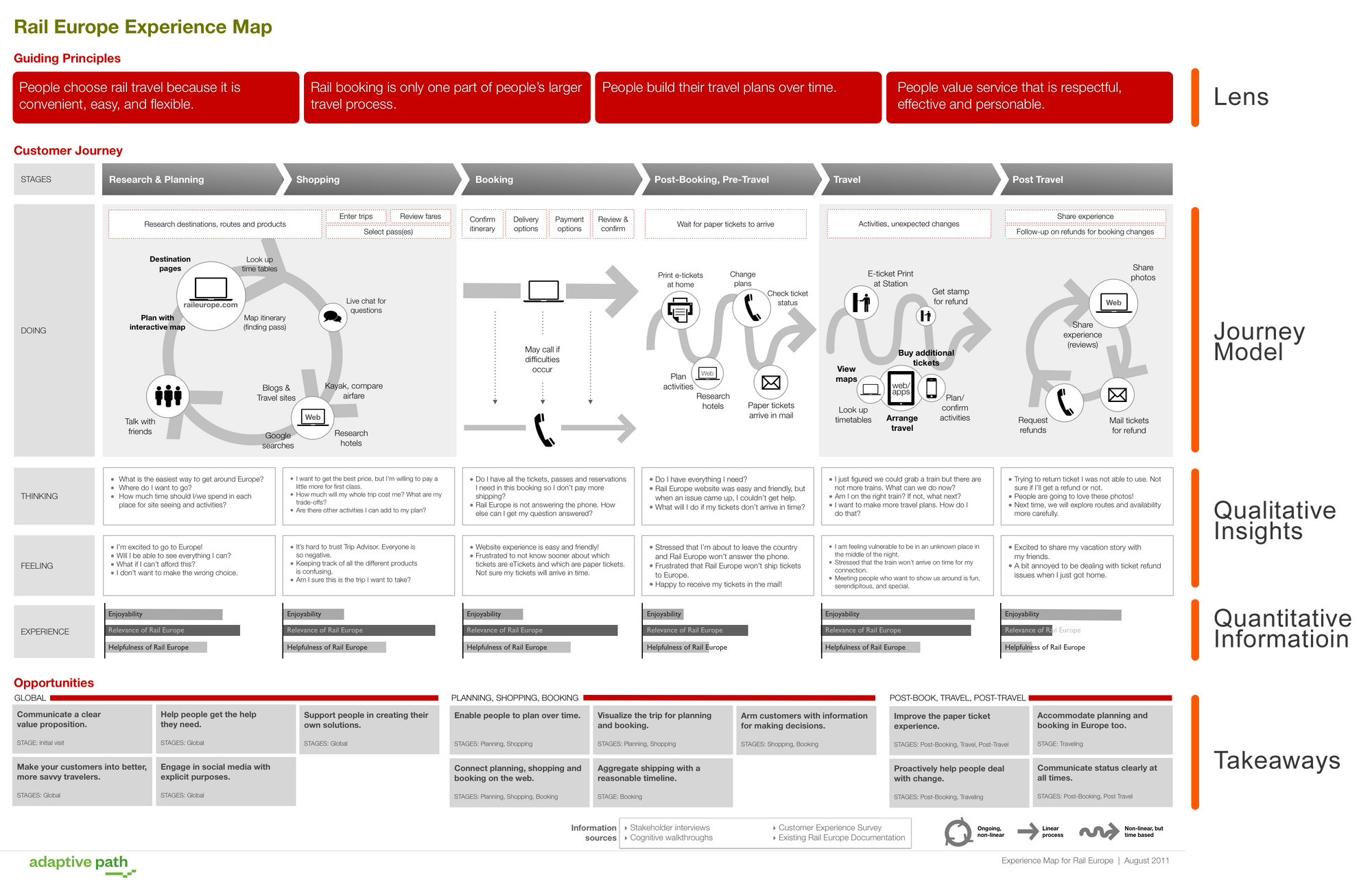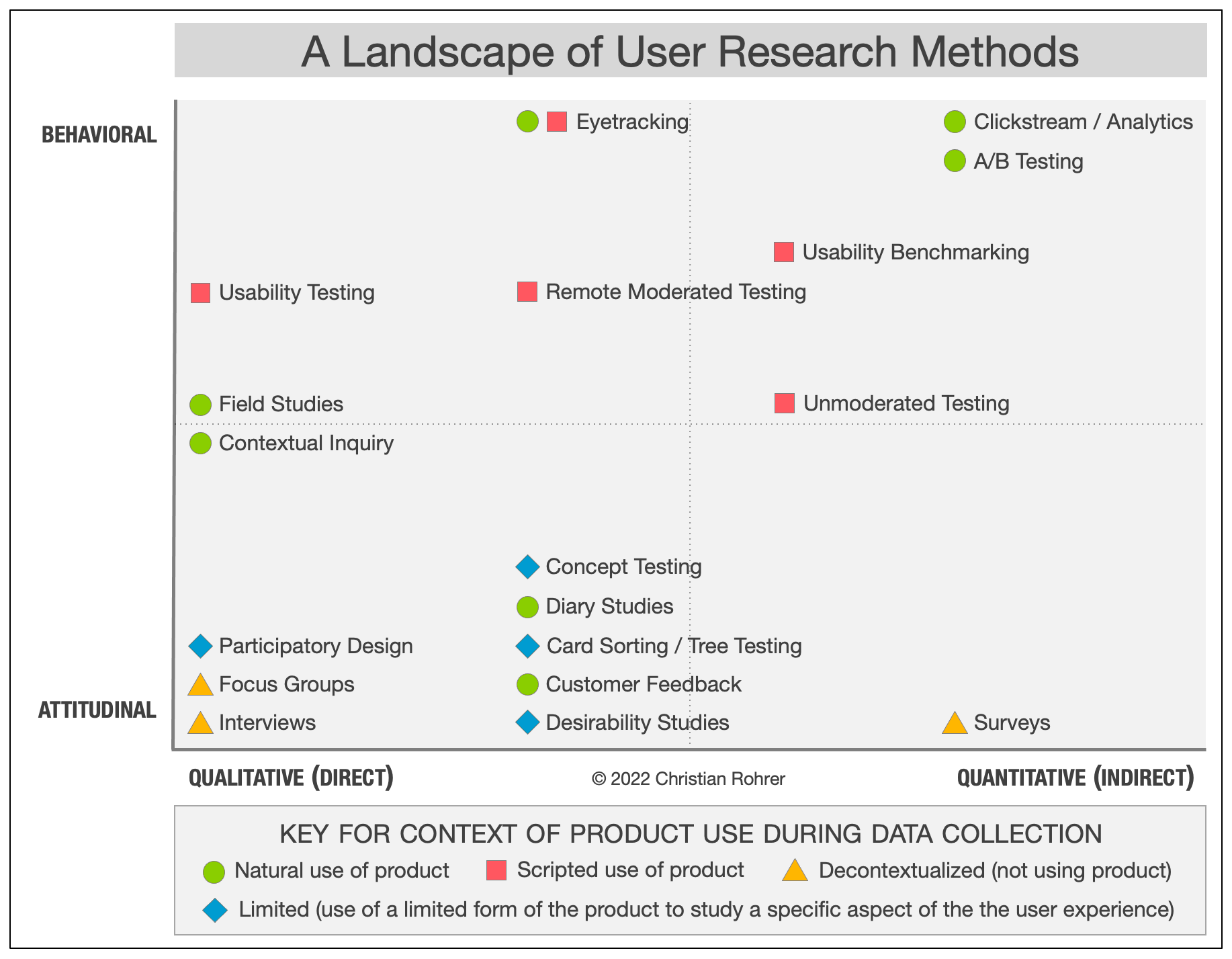Product Design Frameworks
With so many potential product design frameworks to choose from, product managers should select the approach that aligns with their current product maturity and unknowns. The right framework provides the process, collaboration, and customer insight needed to build products people want.

As a product manager, having a solid product design and development process is crucial for building successful products. But with so many potential frameworks to choose from – design thinking, lean startup, design sprints – it can be daunting to know which approach is right for your team and product – how do you know which one is right for your team?
In this post, I'll provide an in-depth overview of the most popular product design frameworks including design thinking, jobs to be done, the double diamond, and more.
You'll learn the key principles of each approach along with the best situations to use each framework.

I'll also offer tips on choosing the right methodology based on your product maturity and current unknowns.
Key Takeaways
- Effective product discovery focuses on understanding user needs, evaluating opportunities, and testing concepts before committing to a solution.
- Choosing a framework depends on your product maturity, knowledge gaps, and how much validation you want upfront.
- Blend elements of different frameworks into a custom process fitting your team's needs, focused on rapid iteration with real users.
With a better understanding of leading product design frameworks, you'll be equipped to create a custom process that fits your product development needs.
Let's dive in.
Product Discovery

Product discovery is the process of identifying and evaluating potential product opportunities. It comes before product design and development and focuses on discovering problems worth solving and ideas worth pursuing.

Key activities in product discovery include:
- Customer research - Conduct user interviews, send out surveys, observe users in their environment to understand pain points and unmet needs. This primary research reveals insights you can't find through secondary sources.
- Competitor analysis - Study direct and adjacent competitors to find gaps in the market, opportunities for differentiation, and inspiration for innovation. Reverse engineer products to understand their strengths and weaknesses.
- Data analysis - Mine usage analytics, market research, web data, and other sources to spot trends and patterns pointing to promising product directions.
- Ideation - Brainstorm and expand on ideas from research through creative exercises like Mind Mapping, SCAMPER, and Six Thinking Hats. Push past obvious solutions to find breakthroughs.
- Opportunity assessment - Weigh opportunities against criteria like customer value, market size, competitive dynamics, and your capabilities. Prioritize opportunities with the best chance of success.
- Concept testing - Create simplified prototypes or storyboards communicating the value proposition and get feedback from target users through surveys or interviews.
An effective product discovery process expands the solution possibilities and identifies the opportunities with the most potential for meeting user needs and achieving business success. The insights uncovered during discovery guide strategic product planning and fuel your innovation pipeline.
Let's now look at specific frameworks you can use in the discovery process.
Design Thinking

Design thinking is an iterative, nonlinear process focused on understanding users, challenging assumptions, and creating innovative solutions that meet human needs. It brings together desirability from the user's perspective, technical feasibility, and business viability.
The design thinking process moves between divergent and convergent thinking modes. Divergent thinking opens up possibilities through stages like empathizing with users to understand needs, defining problems from the user's perspective, and ideating many potential solutions. Convergent thinking narrows down possibilities through prototyping and testing solutions with users.
This human-centered approach fosters creativity by building empathy, redefining problems, and designing thoughtful experiences. Design thinking offers a framework to tackle complex challenges and develop products, services, and solutions that truly resonate with user needs.
1. Empathize
The goal of the empathize stage is to thoroughly understand the problem you are trying to solve from the user's perspective. Steps include:
- User interviews - Conduct in-depth interviews to understand user behaviors, environments, concerns, emotions, and motivations. Ask open-ended questions.
- User observations - Observe users interacting with products/services in their natural environment. Look for verbal and non-verbal cues.
- Empathy mapping - Visually organize what you learned about user needs, behaviors, and pain points into an empathy map. Identify insights.
2. Define
Synthesize key insights from the empathize stage to define the core problems you will address. Steps include:
- Point-of-view statements - Craft POV statements that summarize user needs. For example: "Suzy needs a way to check her bank balance without logging into online banking so that she can quickly manage her finances on the go."
- User personas - Create 1-2 page descriptions of hypothetical archetypes based on research learnings to represent your user segments. Include demographics, behaviors, concerns, and goals.
- Problem statement - Craft a problem statement summarizing the user need and design challenge. For example: "Busy professionals need a mobile way to manage personal finances quickly without compromising security."
3. Ideate
Generate a wide range of ideas and solutions for the problem statement. Steps include:
- Brainstorming - Generate ideas quickly. Encourage wild ideas. Build on others' ideas.
- Worst possible idea - Think of intentionally bad ideas to expand thinking. Useful for challenging assumptions.
- SCAMPER method - Use prompts like substitute, combine, adapt, modify to spark new ideas.
- Analogies - Make connections to solutions in other industries/domains to inspire ideas.
- Sketching - Translate ideas into simple sketches. Visualize concepts.
4. Prototype
Build real life representations of possible solutions to get tangible feedback. Fidelity increases over iterations. Steps include:
- Paper prototypes - Mockups made of paper, posterboard, etc. to demonstrate user flow.
- Storyboards - Illustrate key screens/steps in a story using sketches.
- Digital prototypes - Use tools like Figma, Sketch, InVision to build clickable prototypes.
- Wizard of Oz - Test prototypes by manually mimicking certain functionality.
5. Test
Gather user feedback on prototypes through observation and interviews. Identify improvements for further iteration. Steps include:
- Plan testing protocol to align with prototype fidelity and questions you want answered.
- Set up prototype in real usage environment and give users specific tasks.
- Record sessions and observe where users struggle. Ask clarifying questions.
- Identify which prototypes better address user needs. Iterate based on insights.
When to Use Design Thinking
Design thinking is especially useful when:
- Deep user empathy and insights are needed to solve a complex problem
- The problem space is ambiguous with unknown or latent user needs
- You want to go beyond incremental improvements to find disruptive innovations
- User-centric solutions are required for product adoption and success
Design Thinking excels at innovation but can be used to improve existing products and services as well.
Jobs To Be Done

The Jobs to be Done (JTBD) framework is a technique used in product development and marketing to understand what "jobs" customers are trying to get done when they buy a product or service. The key idea behind Jobs to be Done is that people don't simply buy products, they hire them to make progress in specific circumstances.
To apply the Jobs to be Done framework:
- Identify the jobs customers are trying to get done.
Conduct research through surveys, interviews, and observations to uncover the functional, social, and emotional jobs people are trying to accomplish. Jobs can include basic tasks, solving problems, satisfying needs, or making progress in a particular situation. - Understand the customer's current alternatives.
What other products or solutions are customers using now to get the job done? Where are they underserved? This helps uncover opportunities for new solutions. - Map out the customer's job process.
Visualize the steps customers take to get the job done and the obstacles they encounter. This highlights pain points and areas for innovation. - Design solutions that do the job better.
With insight into the customer's job to be done and process, design features and messaging that position your product as the superior solution for getting the job done right.
Evolve with changing jobs. Customer jobs change over time. Continuously research how circumstances are changing and evolve your solutions to remain the best way to get the job done.
The Jobs to be Done approach focuses on the underlying drive and motivation that causes customers to hire solutions rather than on customer demographics or product attributes.
With a deep understanding of jobs, companies can create products that customers will pull into their lives.
Design Sprint

The Design Sprint is a 5-day framework created by Google Ventures for rapidly prototyping and testing product ideas. It provides a structured process for validating concepts and solving problems through design, prototyping, and customer testing. The 5 phases of the Design Sprint are:
- Understand – On day 1, gather background information, define the problem, and create a map of the existing customer journey. The goal is to identify the challenge and frame the problem statement.
- Diverge – During this phase on day 2, ideate solutions through sketching, note-taking, and brainstorming. Focus on generating a wide range of ideas without judging initial concepts.
- Decide – On day 3, analyze and prioritize the ideas generated during divergence. Define the target users, core features, and goals, and pick a direction through discussion and dot voting.
- Prototype – Build a realistic prototype of the concept on day 4. Focus on catching the core experience and not finishing a polished product. Use simple tools like paper prototypes.
- Validate – Finally, test the prototype with target customers on day 5. Observe their interaction and collect feedback through interviews and surveys.
The accelerated Design Sprint process provides quick iterations for testing the viability of product concepts before committing extensive resources. The outcome is an actionable plan grounded in customer feedback and data to move forward.

Sprints enable validating product ideas with real users in just 5 days—a powerful approach for innovation and unlocking breakthrough solutions.
Design Sprint 2.0

Design Sprint 2.0 is an updated version of the original Design Sprint framework created by AJ&Smart and Google. It aims to improve the process by making it more flexible and adaptable.
The main updates in Design Sprint 2.0 include:
- Shortened timebox - The sprint is condensed from 5 days to just 4 days. This allows for rapid iteration in even less time.
- Flexible phases - There are still 5 phases (Understand, Diverge, Decide, Prototype, Validate) but they are adjustable based on needs. Some phases may be longer or combined.
- Remote-friendly - The updated sprint incorporates remote collaboration through tools like Miro, Figma, and Zoom. Hybrid sprints blend physical and virtual work.
- Repeatable process - The cycles are designed to be repeatable for ongoing iteration. Teams can run multiple cycles to continuously refine and improve.
- Focus on alignment - More time is spent upfront aligning on goals and questions to maintain vision. Ends with recommitment to decisions.
- Improved prototyping - Prototyping is expanded beyond static screens to simple interactive prototypes. This enables more robust user testing.
Design Sprint 2.0 provides a more nimble and customizable structure for teams to test ideas and assumptions.

It scales from small startups to large organizations with distributed teams. The accelerated process allows companies to fail fast, learn critical lessons, and succeed sooner.
Customer Journey Mapping

Customer journey mapping is a visual framework for examining the overall experience customers have with a product or service. It involves plotting out each touchpoint and milestone from the customer's perspective.
Steps for creating a customer journey map include:
- Define the scope - Determine the timeframe, phases, and touchpoints to map. Limit the focus to keep it manageable.
- Gather customer insights - Conduct user research through interviews, surveys, data analysis, and more to understand behavior.
- Map the stages - Outline the key stages customers go through to accomplish their goal. For example, onboarding, engagement, support.
- Identify actions - Document what actions customers take at each touchpoint in the journey. Include pain points and bright spots.
- Add emotional context - Layer in customers' mindset, emotions, questions, and perceptions at each stage.
- Find opportunities - Analyze the map to pinpoint friction points and moments of delight or abandonment.
- Storytell and visualize - Bring the map to life through a compelling narrative and visual representation. Prioritize key insights.
- Strategize improvements - Use insights from the map to inform better product design, messaging, and customer experiences.
Customer journey mapping creates alignment around the true user behavior throughout the customer experience. It provides a human-centered view of product interactions to uncover barriers and opportunities for better serving customers based on their user behavior.
Mapping the journey enables creating experiences that smoothly guide customers to success by optimizing the product around user behavior.

Adaptive Path's Guide to Experience Mapping
Download Adaptive Path's Guide to Experience Mapping to get the fundamental tools to start mapping customer journeys.
Double Diamond Framework

The Double Diamond is a design process model developed by the British Design Council. It visualizes the iterative nature of design projects in four phases of the double diamond model:
- Discover - Research user needs, market factors, technology, and constraints. Collect data through ethnography, surveys, competitive analysis, and requirements gathering.
- Define - Synthesize findings into actionable insights. Frame the vision, problem statement, target outcomes, success metrics, and scope.
- Develop - Generate and refine potential solutions. Brainstorm concepts, create prototypes, solicit feedback, and iteratively improve.
- Deliver - Finalize and launch the product or service. Plan for scalability, monitor performance, and optimize based on real-world usage data.
The two diamonds visually represent divergence and convergence. The Discover and Define phases diverge to expand the question space. The Develop and Deliver phases converge potential ideas into a focused solution.
Key benefits of the Double Diamond framework include:
- Front-loads research to guide strategic vision
- Structures the fuzzy front-end of innovation
- Captures insights from real users early and often
- Visualizes the design process for alignment
- Embraces iteration by design
The Double Diamond provides an adaptable model applicable across industries and project types. It balances wide-open creativity with tactical execution to deliver human-centered solutions.
Working Backwards

The Working Backwards approach is a framework popularized by Amazon for developing new products and services. It focuses on starting with the end customer in mind and working backwards to the solution. The steps are:
- Start with the customer – Identify the target customer and their underserved needs.
- Solve their problem – Define the customer experience and value proposition required to meet those needs.
- Uncover the technology – Determine the capabilities and technology necessary to enable that experience.
- Iterate quickly – Develop, iterate, and refine the product features and infrastructure to deliver those capabilities.
This outside-in process grounds product development in real customer insights rather than starting with the solution.
By always linking work back to customer value, teams build products perfectly tailored to users.
PR/FAQ
PRFAQ stands for Press Release FAQ and is a complementary framework to Working Backwards focused on messaging. Creating a PRFAQ involves:
- PR – Drafting a mock press release announcing the product launch. This aligns the team around positioning and messaging.
- FAQ – Writing a mock frequently asked questions list predicting customer questions. This brings up gaps and vulnerabilities.
- Review – Review with your team and stakeholders, iterating messaging and product features until the press release and FAQ feel solid.
PRFAQ forces teams to view the product announcement from the customer's perspective. Crafting the messaging upfront ensures the final product nails the promised positioning.
PRFAQ and Working Backwards help connect a customer-centric vision to execution by focusing on understanding customer pain points. By continuously focusing on customer pain points, we ensure the vision stays grounded in real customer needs, and Working Backwards operationalizes that vision in a way that delivers value.

The combination of the two approaches connects vision to execution with the customer at the center.
Lean Startup

Lean startup applies lean manufacturing principles like minimum viable product (MVP) to product development. The goal is to build and test with the smallest thing possible.
The core activities are:
- Build - Quickly build an MVP with just enough features to test your riskiest assumptions.
- Measure - Define key metrics to measure the MVP performance and customer response.
- Learn - Analyze results and customer feedback to understand what's working.
- Pivot - Adapt your product and strategy based on learnings.
Lean startup works well when you want to rapidly iterate a product with lots of unknowns. It helps validate product-market fit.
Picking the Right Framework

With an overview of popular design frameworks, choose based on your product maturity, what you want to learn, and how much validation you already have. Lean startup and design sprints can quickly validate new ideas while jobs to be done and design thinking are better for exploration. Ultimately you want an iterative process centered on customer needs - so adapt frameworks as you learn more.
There are a variety of discovery frameworks that can help you deeply understand customer needs and map out an effective discovery process. By researching existing solutions and interviewing key stakeholders, you can gain insights to develop actionable solutions that directly address your customers' biggest problems.
The right framework will help you determine which features matter most to delight your users. Design thinking provides a human-centered discovery process focusing on empathy and quickly testing ideas, while jobs to be done examines the core jobs customers want to get done.
Overall, choosing a discovery framework that aligns with your current product maturity and unknowns will enable you to build products that truly resonate with your customers' needs.
The right product design framework provides the process, cross-functional collaboration, and customer insight to build products people want. As a product manager, choose wisely based on where you are today and where you want to be tomorrow.
FAQ
How does this work in practice?
The product team worked closely with the development team to shape the product strategy and roadmap based on customer feedback. The product management team conducted user research and synthesized insights to define strategic priorities to guide the development team's work. Through rapid iteration and continuous deployment, the product team was able to gather additional customer feedback to further refine the product experience. This tight collaboration between product management, the product team, and development enabled the company to bring innovative solutions to market quickly that solved real problems for customers. The integrated team effort was key to aligning product strategy with development capabilities to deliver ongoing value.
What are the differences from product management frameworks and how do product managers use them?
Product managers utilize frameworks like the Double Diamond from the British Design Council to structure the design process from research through delivery. Other frameworks like RICE help product managers prioritize features based on reaching objectives. Additional prioritization frameworks like MoSCoW method focus on aligning to customer segments. Lean Canvas and the Business Model Canvas enable product teams to design and test business model hypotheses. Broad market research and jobs-to-be-done interviews help product managers deeply understand customer needs. By leveraging frameworks like the Kano model, product teams can categorize features based on performance and customer satisfaction. Synthesizing research insights, product managers and cross-functional teams can then create roadmaps and strategic plans using additional frameworks like Impact Mapping. The diverse range of prioritization frameworks and design processes provide product managers with tools to shape winning products.
Companies must prioritize developing features that deliver significant value and meet customer demands to drive customer satisfaction. Frameworks like the RICE method help product teams systematically prioritize user stories and features during product planning. Using discovery frameworks like the Design Sprint in the early stages allows validating proposed solutions against existing alternatives. This helps teams determine if a proposed business model will satisfy customer needs. Methods like MoSCoW categorize planned features based on necessity to the customer during a product roadmap. Using a mix of prioritization frameworks, companies can ensure they are developing the most impactful capabilities that will resonate with users and fulfill customer demands.
product management frameworks product management frameworks product management framework product management framework product management framework product management framework product management frameworks product management frameworks product management frameworks product management frameworks product management frameworks product managers product managers product managers product managers product managers product managers product managers british design council design process model performance features performance features prioritization frameworks prioritization frameworks business model canvas prioritize features product teams product teams objective scoring system customer segments gist planning framework market research

